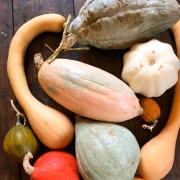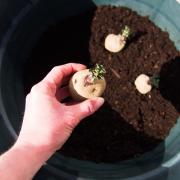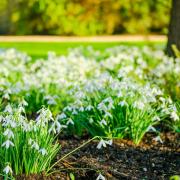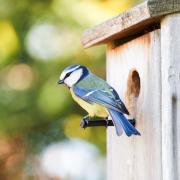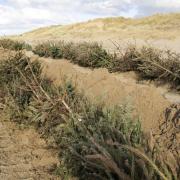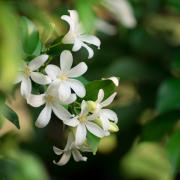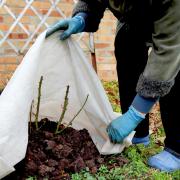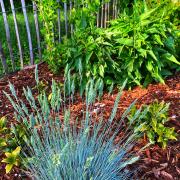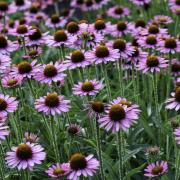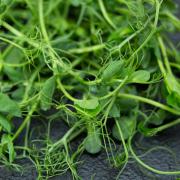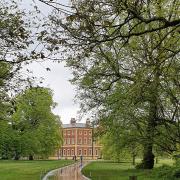A medieval house next to a famous old church provides the backdrop for a gorgeous garden. Linda Viney reports
Great Mitton Hall is one of our finest old houses so it comes as no surprise to find it has an equally glorious garden and one of the best views in Lancashire.
The house sits adjacent to the 12th century All Hallows Church, believed to be the first Christian church in the Ribble Valley and described by experts as having ‘astounding beauty.’
That could also apply to the hall’s garden framed against exceptional views of the surrounding countryside with a focal point of Pendle Hill. Nearby is the confluence of the Ribble and the Hodder, a natural feature that provides the root to the name Mitton.
The Grade II listed hall is a splendid piece of our county’s history and it has a garden with just about everything you could wish for - from formality to seating areas and more traditional sections where herbaceous borders billow over lawns.
Jean and Ken Kay moved here from Great Harwood and, while they inherited a few things in the garden, Jean has had great fun making her own mark on the place. Her artistic talent shines through as you walk around.
Stepping out of the kitchen door to your left you can hear the gentle cluck of chickens.
‘Every garden should have them,’ Jean confides. ‘They are such a joy - so friendly and there’s the bonus of fresh eggs.’
A quirky garden shed with old tools leaning up against the side has a painted bucket, robins’ nest box and sign marking stating: ‘A dedicated gardener dwells within.’ No prizes for guessing that is Jean.
Containers are home to vegetables and fruit with a strawberry bed, peas trained up obelisks, fruit trees and raspberries which are surrounded by upturned terracotta pots. These make homes for solitary bees in winter as she lines them with moss and fills them with straw. She also has a hive ready for the day she can start keeping honey bees.
Nestling in a shady corner is a gravestone commemorating the time she gave a retirement home to a former police horse of the year called ‘Marquess’.
Jean does whatever she can to encourage wildlife but she draws the line at sheep, preferring a couple of the model ones. ‘I had these before they became popular,’ she laughs. ‘Maybe I started the trend.’
The formal parterre isn’t planted with colour but filled with chipped bark giving it a natural feel. A sundial stands in the central axis and lights are placed to add to the ambience in the evening. Low stone urns contain box balls and to echo the stone ‘canon balls’ placed between. The patio by the hall is also home to topiary balls though this time in tall pots. Jean had gates made which give the illusion you can walk from the hall straight into the church.
A small oval lawn breaks up the stone and gravel paths which take you to the raised square pond with lights placed on each corner and a statue of a heron stands guard. Water lilies flourish and seats are all round so you can enjoy the tranquility of the water. Scented yellow roses, which were inherited, are trained over a wooden arch with a stone seat overlooking the garden and views beyond, this is guarded by two mythological stone creatures.
Herbaceous perennials including eryngium and campanula are planted alongside the stone wall dividing the churchyard from the garden these give colour but are low enough to keep the view. Moving round the rear of the hall another seated area with alcoves with a wooden bench and small mirrored chapel style arches reflecting the garden placed in the corner.
Again herbaceous planting and numerous roses planted by the dividing fence. Dragging away from the rural views steps lead from here to the higher part. Ornamental grasses sway in the breeze and roses and clematis clamber over wooden arches.
There is a quiet sheltered corner where even a gargoyle has time to reflect looking towards the stone fairy toadstools. A wooden gate with sign ‘Gone Fishing’ ukgives the deception of more beyond and the borders are crammed full of plants ensuring there is no room for weeds. A cotinus (smoke bush) contrasts with a spirea, each adding colour from foliage.
Jean has a great artistic eye and her interior design background is evident with many unusual and exciting features. The garden definitely compliments the surrounding scenery and her love of nature is very much in evidence. The garden, conveniently close to the Hillcrest Tea Rooms, opened for the National Garden Scheme this year and hopefully more visitors will get the opportunity to enjoy this outstanding plot next year.



